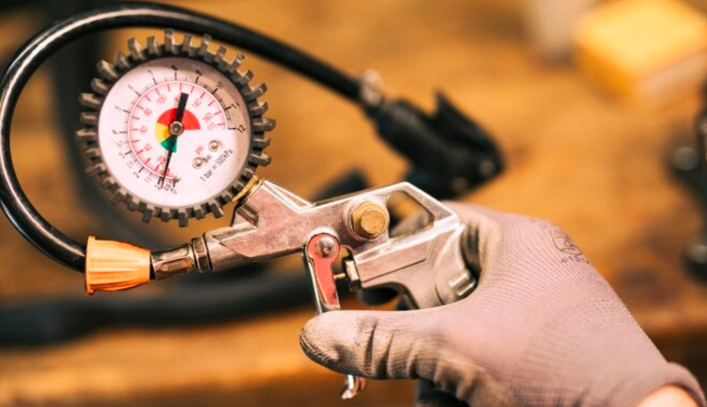Introduction
Vacumetros, also known as vacuum gauges, are essential devices in numerous industries for measuring vacuum pressure. Whether you’re in automotive repair, industrial manufacturing, HVAC systems, or laboratory research, vacumetros provide valuable insight into pressure levels in a system. The purpose of this article is to delve deeply into what vacumetros are, how they work, their various types, uses in different fields, and the factors you should consider when choosing one. We will also explore the importance of proper maintenance to ensure that vacumetros operate effectively and reliably.
What is a Vacumetro?
A vacumetro is a tool that measures the pressure in a vacuum system, generally denoted as negative pressure relative to atmospheric pressure. It works by detecting pressure levels below the surrounding air pressure. This measurement is crucial in various applications where precise pressure control is needed.
How Does a Vacumetro Work?
Vacumetros measure the differential between atmospheric pressure and the pressure inside a given system. They usually consist of a diaphragm, tube, or other pressure-sensitive mechanisms that respond to changes in pressure. As the pressure decreases or increases, the instrument translates these changes into a readable measurement, often in millimeters of mercury (mmHg) or pascals (Pa).
- Pressure Sensing Mechanism: The diaphragm or sensor within the vacumetro moves in response to changes in pressure. These movements are interpreted into measurable data.
- Measurement Output: Depending on the model, the output can be analog (needle-based) or digital (screen display), allowing users to easily understand and use the data for their respective systems.
Importance of Using a Vacumetro
Vacumetros offer several advantages, and understanding their benefits is crucial for optimizing their use in various industries:
- Accurate Pressure Monitoring: Monitoring pressure in real-time allows for better control of systems, avoiding damages caused by vacuum leaks or pressure mismanagement.
- Leak Detection: These instruments can help quickly detect leaks in various systems, such as HVAC units, automobile engines, and industrial equipment.
- Efficiency Optimization: Maintaining optimal pressure levels can save energy, reduce operational costs, and prolong equipment life.
Types of Vacumetros
Vacumetros come in various forms, each suited for specific applications. Knowing the types helps in selecting the right vacumetro for your needs.
1. Analog Vacumetros
- Simple and Easy to Use: These models have a needle gauge that moves in response to pressure changes. They are often used in basic automotive and HVAC applications.
- Advantages:
- Easy to read for quick assessments
- Lower cost than digital counterparts
- Common Use: Automotive engine diagnostics and industrial vacuum pumps.
2. Digital Vacumetros
- Higher Precision: These vacumetros display readings on a digital screen and are often used in environments where high precision is required.
- Advantages:
- Precise and clear measurements
- Can measure smaller changes in vacuum levels
- Common Use: Laboratories, scientific research, and sensitive industrial processes.
3. Vacumetros with Gauge Manifold
- Dual Measurement Capabilities: These devices are often used in HVAC and refrigeration systems because they can measure both vacuum and positive pressures.
- Advantages:
- Versatile use in a variety of applications
- Can handle both vacuum and pressure systems
- Common Use: HVAC system installations and maintenance.
4. Thermocouple Vacumetros
- Thermal Sensing: These vacumetros measure pressure using the cooling effect of gas molecules on a heated wire.
- Advantages:
- Effective in low-vacuum settings
- Common Use: Laboratory environments where precise control over low vacuum conditions is necessary.
5. Capacitance Manometer Vacumetros
- Highly Accurate: These vacumetros measure pressure by detecting changes in capacitance due to deflection in a diaphragm.
- Advantages:
- High precision across a wide range of vacuum levels
- Common Use: Semiconductor manufacturing, where fine pressure control is critical.
Common Applications of Vacumetros
Vacumetros are essential across various industries. Below are some key fields where vacumetros are used regularly:
Automotive Industry
In the automotive world, vacumetros are used to measure vacuum levels in engine components, helping to:
- Diagnose Engine Problems: Vacuum leaks can cause serious issues like misfires, poor performance, or inefficient fuel consumption. A vacumetro can quickly identify these leaks.
- Optimize Carburetor Functioning: In older vehicles, tuning the carburetor often relies on vacuum measurements to adjust fuel-air mixtures.
HVAC Systems
HVAC (Heating, Ventilation, and Air Conditioning) systems rely on accurate vacuum measurements to:
- Ensure System Efficiency: Vacumetros help maintain proper air pressure in HVAC systems, which can improve energy efficiency and reduce operational costs.
- Detect Leaks: Using a vacumetro helps identify pressure leaks that could cause system malfunctions or inefficiencies.
Scientific Laboratories
In laboratory environments, vacumetros are used for:
- Maintaining Accurate Pressure Levels: Many scientific experiments require highly controlled environments where precise vacuum levels are maintained.
- Monitoring Experiments: In experiments that require reduced pressure or vacuum environments, vacumetros ensure that conditions remain stable.
Industrial Manufacturing
Industrial applications for vacumetros include:
- Monitoring Vacuum Systems: In many manufacturing processes, vacuum systems are used to control variables such as moisture content, chemical reactions, and material handling.
- Ensuring Product Quality: Consistent vacuum pressure is often required to ensure product quality, particularly in the production of electronics, chemicals, and pharmaceuticals.
| Industry | Common Applications of Vacumetros |
| Automotive | Diagnosing engine vacuum leaks, tuning carburetors |
| HVAC | Maintaining air pressure, detecting system leaks |
| Scientific Laboratories | Controlling vacuum conditions in experiments |
| Industrial Manufacturing | Monitoring vacuum systems in production processes |
Factors to Consider When Choosing a Vacumetro
Selecting the right vacumetro for your needs involves considering several factors:
1. Pressure Range
Different vacumetros measure different ranges of pressure. Some are designed for high-pressure environments, while others are made for low or medium vacuum levels.
- Low Vacuum: Use vacumetros designed for low vacuum ranges, like thermocouple or mechanical types, if you need precise measurements in low-pressure environments.
- High Vacuum: Choose capacitance manometers or ionization vacumetros for high-vacuum applications.
2. Accuracy
Precision is key, especially in fields like laboratory research or HVAC systems where slight variations in pressure can affect outcomes. Digital vacumetros offer high accuracy and are recommended for detailed measurements.
3. Durability
Vacumetros used in harsh environments, like industrial settings, should be durable and resistant to wear and tear. Look for vacumetros made with robust materials like stainless steel.
4. Ease of Use
Some vacumetros are easier to operate than others. For those unfamiliar with vacuum systems, analog models may be easier to read, while digital vacumetros often offer more advanced features like data logging.
5. Cost
Vacumetros come in a wide range of prices. Analog models are typically more affordable, while digital models with higher accuracy and advanced features tend to cost more. Choose one based on the accuracy and features required for your specific application.
Common Features of High-Quality Vacumetros
When shopping for a vacumetro, there are certain features you should look for to ensure reliability and ease of use:
- Clear Display: Whether analog or digital, make sure the vacumetro has a clear, easy-to-read display.
- Durable Housing: For industrial or automotive use, opt for vacumetros with strong, impact-resistant casing.
- Portability: If you need to use the vacumetro in multiple locations, look for lightweight and portable models.
- Calibration Options: Ensure the vacumetro is easy to calibrate to maintain accuracy over time.
Tips for Maintaining Your Vacumetro
Maintaining a vacumetro is essential for long-term accuracy and performance. Here are some practical tips for extending the life of your vacuum gauge:
1. Regular Calibration
- Calibration is crucial for ensuring accurate readings. It’s recommended to calibrate your vacumetro periodically, especially before critical tasks.
2. Cleaning
- Dirt and grime can affect the functionality of a vacumetro. Regularly clean the gauge to ensure smooth operation.
3. Avoid Overpressure
- Exposing a vacumetro to pressures beyond its designed range can damage the internal components. Always check the pressure range before use.
4. Proper Storage
- When not in use, store your vacumetro in a dry and clean environment to avoid moisture and dust accumulation, which can interfere with accuracy.
Advantages and Disadvantages of Different Vacumetros
| Type of Vacumetro | Advantages | Disadvantages |
| Analog | Easy to use, lower cost | Less precise than digital, limited features |
| Digital | Highly accurate, easy to read | Higher cost, requires batteries or power source |
| Thermocouple | Effective for low-pressure environments | Less accurate at higher pressures |
| Capacitance Manometer | Extremely accurate, broad pressure range | Expensive, sensitive to contamination |
Conclusion
Vacumetros are essential instruments across various industries for measuring and maintaining vacuum pressure. Whether you’re diagnosing a car engine, maintaining an HVAC system, or conducting laboratory experiments, choosing the right vacumetro is crucial for accurate measurements and optimal system performance. By understanding the different types of vacumetros, their applications, and how to maintain them, you can ensure that you’re using the best tool for your specific needs. Regular calibration and proper care will keep your vacumetro functioning efficiently, delivering reliable data for years to come.
FAQs
What is a vacumetro?
A vacumetro is a device used to measure vacuum pressure, indicating the pressure level below atmospheric pressure in various systems.
How does a vacumetro work?
A vacumetro works by detecting pressure changes within a system, using mechanisms like diaphragms or sensors that respond to pressure variations, translating these into measurable data.
What are the different types of vacumetros?
The main types of vacumetros include analog vacumetros, digital vacumetros, vacumetros with gauge manifold, thermocouple vacumetros, and capacitance manometer vacumetros, each suited for specific applications.
Why is it important to use a vacumetro?
Using a vacumetro is crucial for accurate pressure monitoring, leak detection, and optimizing system efficiency, which can lead to cost savings and improved performance.
How do I maintain my vacumetro?
To maintain your vacumetro, calibrate it regularly, clean it to remove dirt, avoid exposing it to overpressure, and store it in a clean, dry environment.
What should I consider when choosing a vacumetro?
Consider factors such as the pressure range, accuracy, durability, ease of use, and cost when selecting a vacumetro for your specific application.





